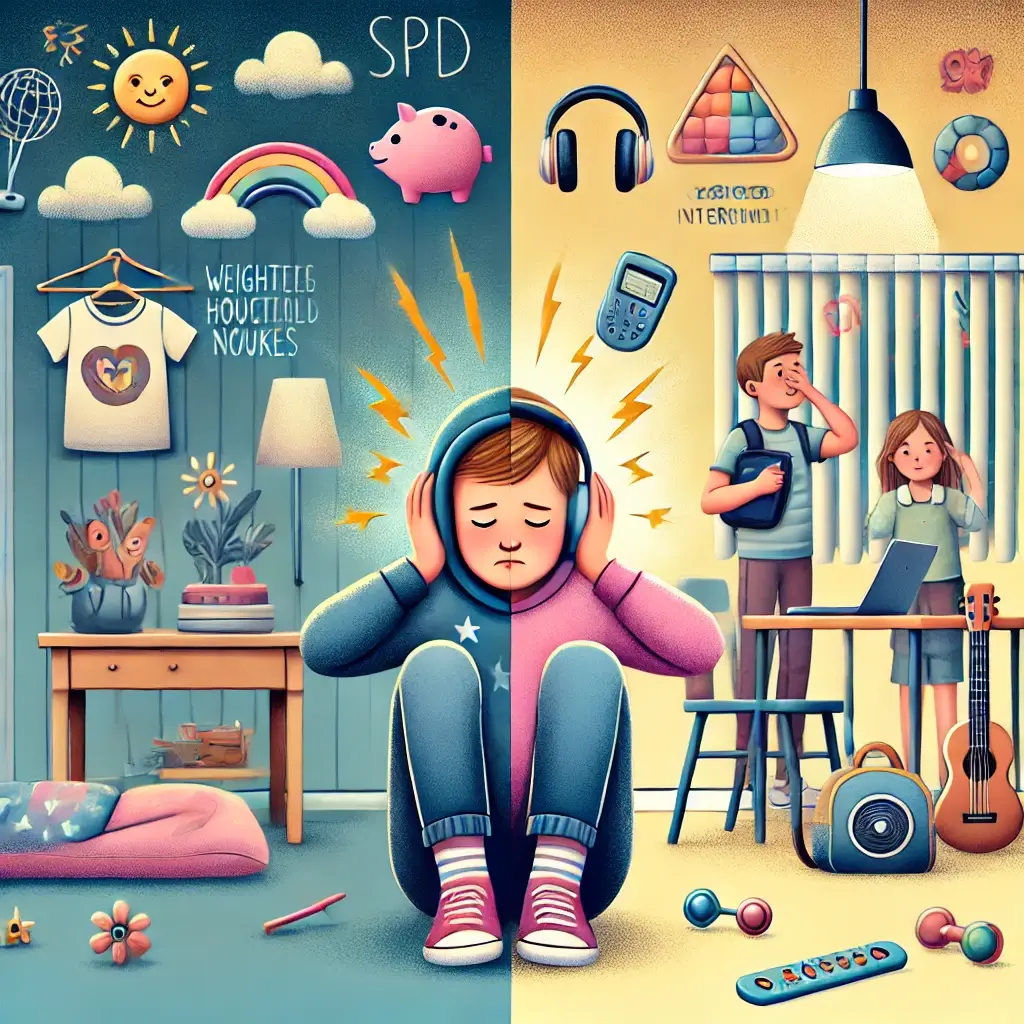What Is the Difference Between ADHD and Autism?
Attention Deficit Hyperactivity Disorder (ADHD) and Autism Spectrum Disorder (ASD) are both neurodevelopmental disorders that can impair a child’s behavior, development, and social interactions. However, they have distinct properties. Here’s an overview of the main differences:
Core Differences:
The key problems in ADHD are inattention, hyperactivity, and impulsivity. ASD’s primary obstacles include social communication, engagement, repetitive habits, or restricted interests.
Social Interaction:
ADHD: Children with ADHD may have difficulty socializing owing to inattention or impulsivity, but they generally want to connect with others. They may interrupt discussions or have difficulty taking turns.
ASD: Children with ASD may struggle with basic social interaction and communication skills. They may struggle to grasp social signs, maintain eye contact, or engage in reciprocal back-and-forth discussions.
Repetitive behaviors:
ADHD: While children with ADHD may have routines or habits, repetitive behavior is not a defining feature.
Repetitive behaviors and restricted interests characterize ASD. This could include repetitive gestures (flapping hands, rocking), fixations on specific themes, or an intense desire for routines.
Communication:
ADHD: Children with ADHD may talk excessively or struggle to remain on track, but their language development is usually on par with their peers.
ASD: Children with ASD may experience delays or issues with language development. They may struggle to express themselves adequately or understand the complexities of language.
Sensory Processing:
ADHD: Sensory processing difficulties are not a distinguishing feature of ADHD, though some children may be particularly sensitive to specific stimuli.
ASD: Many children with ASD have sensory processing issues. They may be excessively or undersensitive to sights, sounds, touch, tastes, or odors.
It’s worth noting that:
These are broad distinctions and symptoms of ADHD and ASD may overlap.
Some people may even have both disorders (co-occurrence).
The intensity of symptoms varies substantially in both ADHD and ASD.
Summarizing the main differences:
ADHD
Core challenges: Include inattention, hyperactivity, and impulsivity.
Social interaction: Can be difficult owing to inattention/impulsivity and a desire for connection.
Repetitive Behaviors: Not a basic characteristic; may have routines or habits.
Communication: I may talk too much or fail to remain on topic.
Sensory Processing: Not a distinguishing quality; others may be more sensitive.
ADD
Core Challenges: Social Communication, Interaction, and Repetitive Behaviors
Fundamental difficulties: Understanding social cues and engaging with others.
Repetitive behaviors include: Repetitive movements, obsessive interests, and a strong desire for routines.
Communication: Delays or difficulty with language development.
Sensory Processing: Many people encounter sensory processing problems.
If you suspect your child has ADHD or ASD, visit a healthcare expert for an accurate diagnosis. Early intervention can greatly benefit a child’s development and quality of life.













